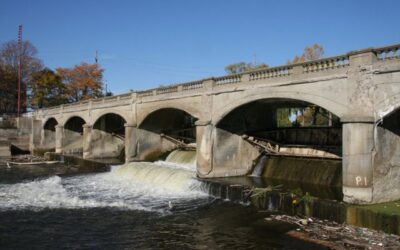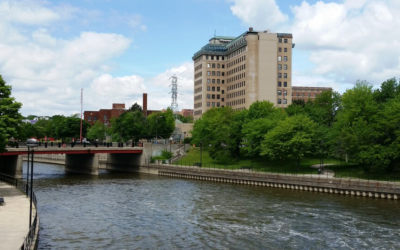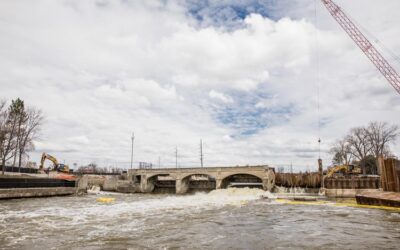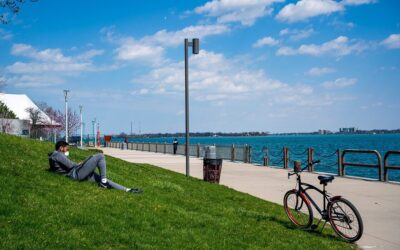More Info & Questions
For information about renting or holding events at the new State Park contact Nancy Edwards: [email protected]
Implementation

Through collaboration between local partners, implementation of the Flint Riverfront Restoration Plan began in 2015 and continues today. Significant progress has been made, including removing the Hamilton Dam superstructure, removing the majority of Fabri Dam, and completing phases 1 – 5 of development at Chevy Commons. To date, more than $15 million of funding has been raised to implement the plan. In 2022, the State of Michigan announced that it would establish a new state park in Flint that will include the Flint Riverfront Restoration Project area.
IN-RIVER RESTORATION
Construction will begin in June of 2024 to FULLY COMPLETE IN-RIVER RESTORATION! This work includes fully removing Hamilton Dam by removing the dam weir, removing the remnants of Fabri Dam, and creating a new in-river structure that will manage the river’s water in the absence of the dams. The new in-river structure will consist of six “riffles.” The riffles are clusters of rocks designed to mimic naturally occurring in-river structures and will be placed at strategic locations within the river. This approach is intended to maximize the effect of in-river restoration work on the natural habitat, including benefits to fish and other aquatic species.
Construction is expected to last 18 months, starting in June of 2024 and finishing in September of 2025. The work will take place in the Flint River in two areas (1) adjacent Riverbank Park between Grand Traverse Street and Harrison Street and (2) near Vietnam Veterans Park near James P. Cole Boulevard and Hamilton Avenue. Portions of Riverbank Park and Vietnam Veterans Park will be closed at various times for construction purposes. Specific section closings are identified on the maps below.

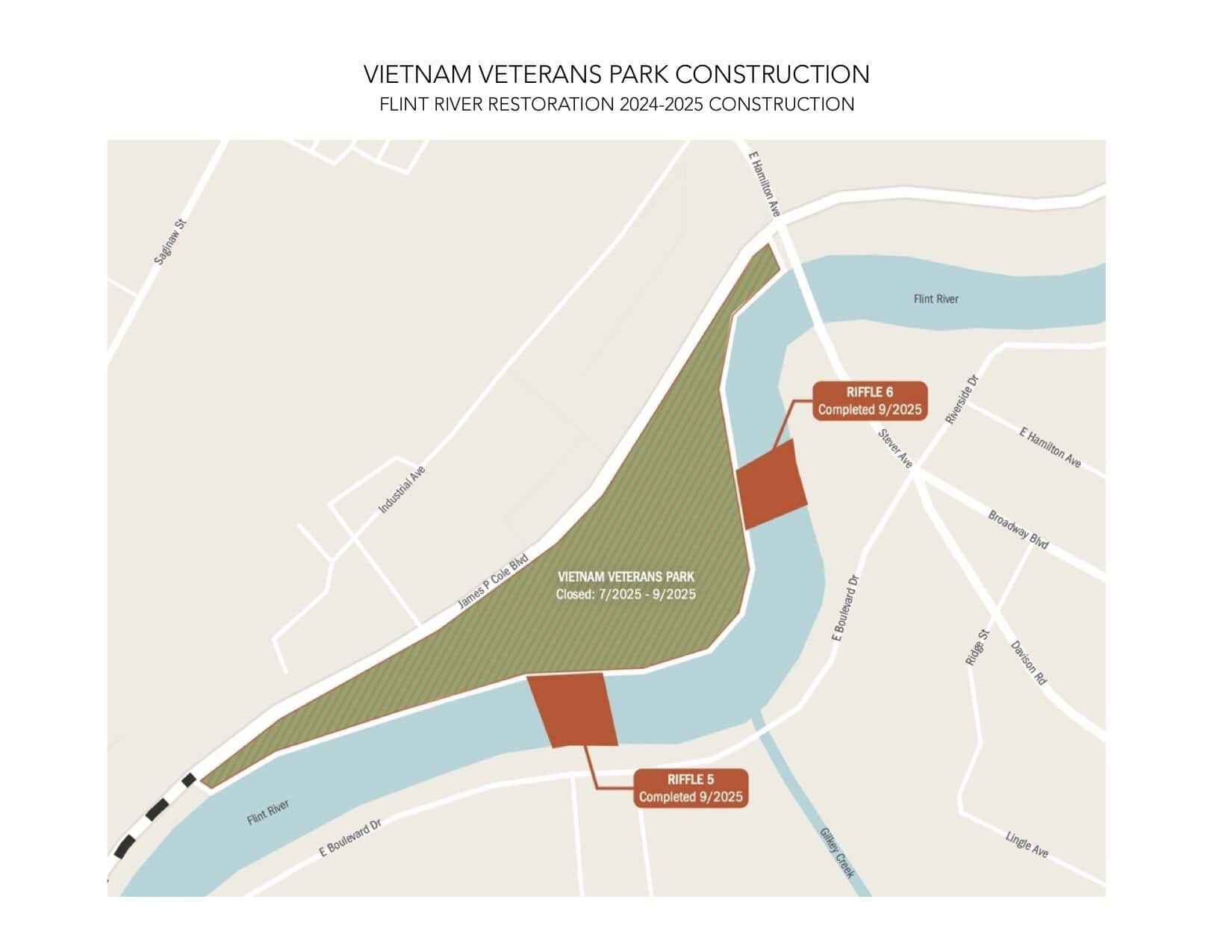
This new construction builds upon the significant dam removal progress that has been over the last decade. The superstructures of both Hamilton Dam and Fabri Dam were removed in 2018, thanks to a $3 million Michigan Department of Natural Resources Dam Management grant.

RIVERBANK PARK
Plans for improving Riverbank Park are being finalized in tandem with in-river restoration plans. Riverbank Park will be transformed by enhanced physical and visual access to the river. Restoration efforts will address longstanding obstacles presented by the existing park infrastructure to safety, accessibility, and maintenance. Design recommendations include creating new access points to the Flint River, constructing ADA accessible pathways, installing a new lighting network, restoring the fountains at both Grand Fountain Block and Waterwall Block, and restoring the public restroom. Specific plans for each of the six blocks that make-up Riverbank Park are being finalized now. Construction is expected to begin in 2025 and to be completed by the end of 2026.
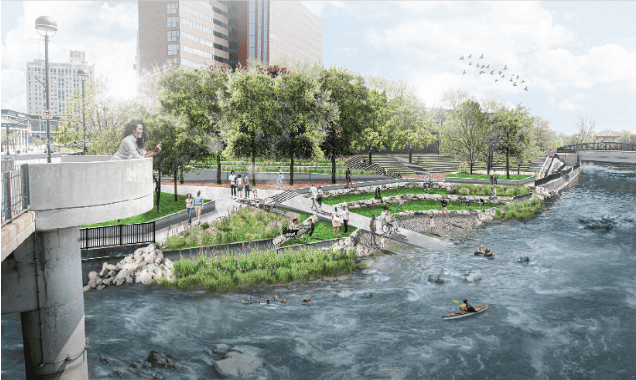
CHEVY COMMONS
In recent years, Chevy Commons has been transformed from a vacant 60+ acre industrial site into a low-maintenance public park that includes trails for pedestrians and bikers as well as natural habitat for local species. Phases I – V of the project have been completed due to strong partnerships and significant funding from multiple sources. The project is a major success story and a nationally recognized Brownfield redevelopment example.
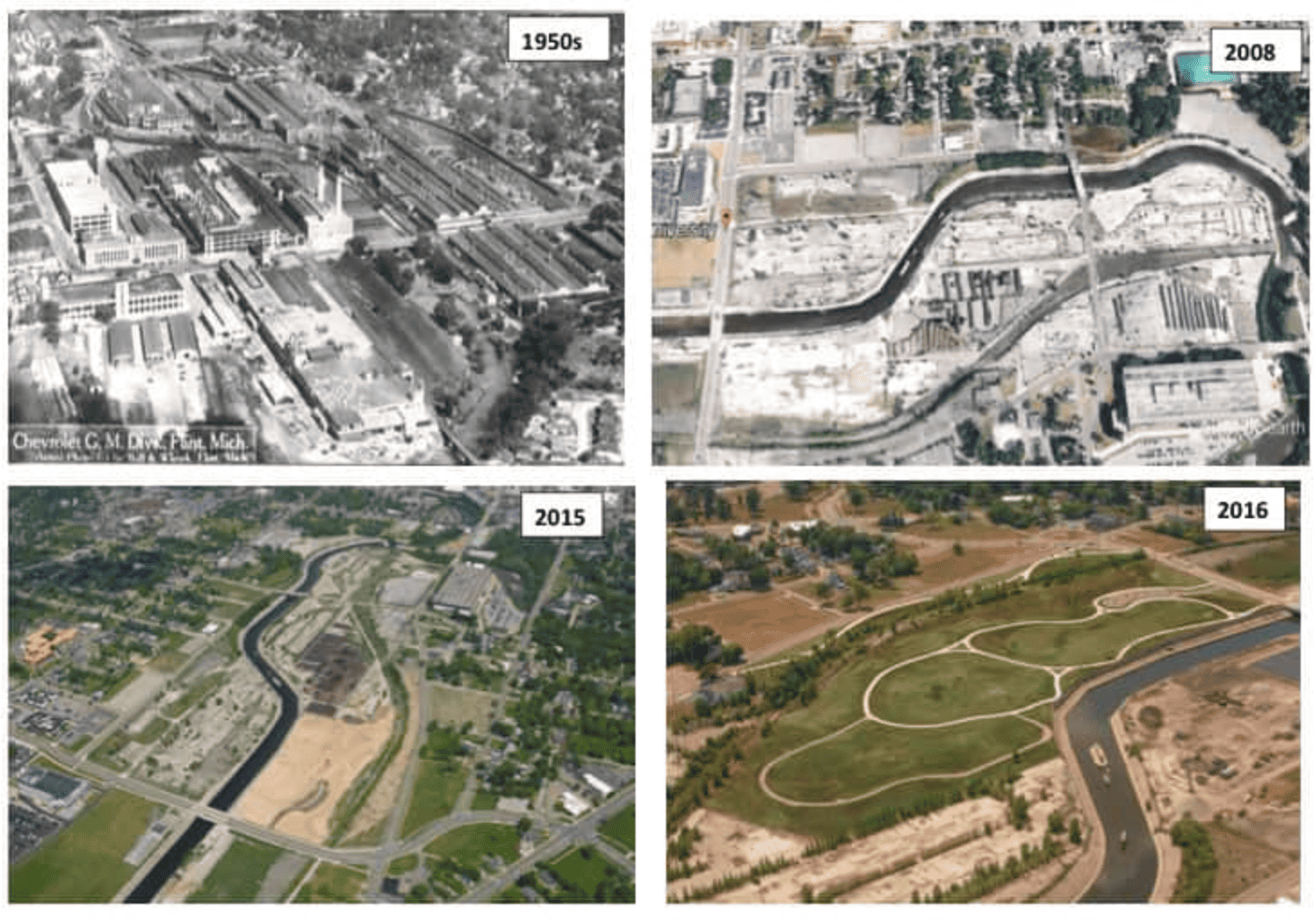
A NEW STATE PARK
In March of 2022, the State of Michigan announced that it would establish a new state park in the city of Flint. This is the first state park in Genesee County, the only county in Michigan without land that is managed by the Michigan Department of Natural Resources, and will become Michigan’s 104th state park. The announcement by the State of Michigan included $30.2 million to support the creation of the state park. The park is designed to consist of 230 acres that stretch approximately 3 miles east to west and more than 1.5 miles north to south. The area includes five park units and three trailway connections, which will provide visitors non-motorized access to the entirety of the park. This composition will provide diverse land use typologies and recreational uses for Flint and Genesee County residents and all park visitors.







